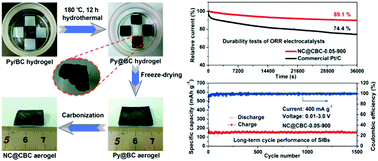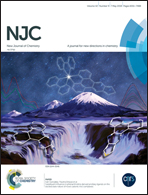Preparation of bacterial cellulose based nitrogen-doped carbon nanofibers and their applications in the oxygen reduction reaction and sodium–ion battery†
Abstract
It is of great practical importance to design low-cost materials as catalysts for the oxygen reduction reaction (ORR) and as an anode for sodium–ion batteries (SIBs). In this paper, we report a class of nitrogen-doped carbon materials with a three-dimensional nanofibrous network derived from inexpensive biomass bacterial cellulose (BC) for both ORR and SIB applications. The samples were prepared by treating the BC aerogels with various amounts of pyrrole to ensure a uniform coating on the surface of the BC nanofibers, followed by a carbonization process under different temperatures. The products were essentially carbon nanofibers coated by a nitrogen-doped carbon layer and retained the initial structure of BC. The optimum amount of pyrrole was 0.05 mL and the optimum carbonization temperature was 900 °C. Our best catalyst exhibited good electrocatalytic performance and durability in ORR, without the presence of noble metals. An electrode made from the same material has also demonstrated a stable cycling performance and superior rate capability in SIB application. Our work has demonstrated a rational design of electroactive carbon materials from a low-cost precursor.



 Please wait while we load your content...
Please wait while we load your content...